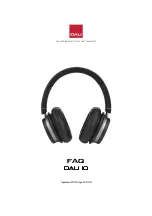
NINA-B4 series - System integration manual
UBX-19052230 - R06
Design-in
Page 18 of 45
C1-Public
Item
Requirements
Remarks
the 50
Ω
nominal impedance of the ANT pin over the entire operating
frequency range.
Efficiency
> -1.5 dB ( > 70% )
recommended
> -3.0 dB ( > 50% )
acceptable
The radiation efficiency is the ratio of the radiated power against the power
delivered to the antenna input; the efficiency is a measure of how well an
antenna receives or transmits.
Maximum Gain
+3 dBi
Although higher gain antennas can be used, these must be evaluated and/or
certified. See NINA-B4 certification [8] for more information on regulatory
requirements.
Table 10: Summary of antenna interface (ANT) requirements for NINA-B4
When selecting external or internal antennas, the following recommendations should be observed:
•
Select antennas that provide optimal return loss (or VSWR) over all operating frequencies.
•
Select antennas that provide optimal efficiency over all operating frequencies.
•
Select antennas that provide an appropriate gain (that is, combined antenna directivity and
efficiency), so that the electromagnetic field radiation intensity does not exceed the regulatory
limits specified in some countries (like the FCC in the United States for example).
2.3.1.1
External RF Connector Design-in (NINA-B4x1)
If the designer wants to implement an arbitrary external RF connector different to the U.FL connector
available on NINA-B4x0 NINA-B4x1 can be used. NINA-B4x1 is smaller compared to NINA-B4x0 and
can be used if a minimum size implementation is required.
Table 9 suggests some RF connector plugs that can be used by the designers to connect RF coaxial
cables based on the declaration of the respective manufacturers. The Hirose U.FL-R-SMT RF
receptacles (or similar parts) require a suitable mated RF plug from the same connector series. Due
to wide usage of this connector, several manufacturers offer compatible equivalents. It is the
responsibility of the designer to verify the compatibility between plugs and receptacles used in the
design.
Manufacturer
Series
Remarks
Hirose
U.FL® Ultra Small Surface Mount Coaxial Connector
Recommended
I-PEX
MHF® Micro Coaxial Connector
Tyco
UMCC® Ultra-Miniature Coax Connector
Amphenol RF
AMC® Amphenol Micro Coaxial
Lighthorse Technologies, Inc.
IPX ultra micro-miniature RF connector
Table 11: U.FL compatible plug connector
Typically, the RF plug is available as a cable assembly. Different types of cable assemblies are
available; the user should select the cable assembly best suited for the application. The key
characteristics of an appropriate plug include:
•
RF plug type: Select U.FL or equivalent
•
Nominal impedance: 50
Ω
•
Cable thickness: Select thicker cables, typically those with a thickness between 0.8 mm to
1.37 mm, to minimize insertion loss.
•
Cable length: The standard cable length is typically 100 mm or 200 mm; custom lengths are
available on request. Select shorter cables to minimize insertion loss.
•
RF connector terminating the other side of the cable: for example another U.FL (for board-to-board
connection) or SMA (for panel mounting).
















































